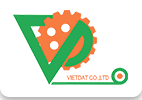Packing costs: Large or small production
Main content
When it comes to the costs associated with your packaging line, many issues revolve around your production scale. Depending on the number of products you run a day, the machinery you are using and the number of employees you have, other costs. In the article below, we will look at the difference between large and small production and the cost associated with each product.
Manpower and packaging machinery equipment
Depending on the size of your company, either of these options could be a decision to make. For example; If you have a large packaging department and rely solely on human labor, you may have to pay more than necessary to employ those employees. On the other hand, if you have a very small number of products daily and weekly but use excessive machinery for your needs, this will also lead to wasting money.
To deploy the correct packaging production line whether it is human labor or machine, you need to have an analysis of your packaging line, the products you are running and the The material you use to pack them. Having your packaging expert analyze will ensure that you use only the machinery or labor you need, without throwing money at things you don't need.
.png)
You will also need to consider the type, size and cost of the material you are using. If the example you are using is entirely human and the packaging table, the carton box may be suitable for you. On the other hand, if you are operating a packaging line with machines, using shrink film may be more suitable, less expensive. Finally, the size and width of your material will also have an impact on your production costs, regardless of size. Taking time to ensure that you are using the right size and width of materials for your specific setup and application will save you money.
Packaging materials
If you're running on human labor, you're probably limited to cardboard or paper products. Comparing your options between these items and balancing your needs for shipping, product protection, and the size and width of your containers will often determine which is the correct choice for friend.
If you are running a mostly automated packaging line with a few operators, the material will be a force that you need to pay close attention to. Choosing the wrong substrate can cause problems for your machine that can lead to poor packaging, excess waste, malfunction and downtime. Even if you do not have any of these issues, using a document that is not optimized for your application can lead to a lot of wasted money.
Is your warehouse wide or narrow?
If you are booting, chances are you won't have a large packaging space in your packaging department. This is an important motivation because you will want to consider how to use the space you have. If you are going to buy packaging machinery, you will want to work with your supplier to ensure that you have enough space to install the machinery you are interested in.
If you are a large company with a large warehouse for the packaging department, you will want to consider what you are spending on your current packaging line and consider upgrading your old packaging equipment for more efficient machines. Although you may have plenty of space to run larger machines, you'll want to make sure you only run the necessary machines without any options you won't be using.
Receiving quotes from at least three vendors to upgrade your device will save you money. You should also ask about the function of each device and do not include utilities and options.
summary
When deciding what type of machinery and materials are appropriate for the scale of your production line, analyzing your line by a packaging specialist is the best way. Finally, it does not matter if you have a large or small production facility. The problem is whether you use the right machines, workforce and materials.
In addition to these dynamics, there are many ways you can adjust your packaging line to achieve the highest performance regardless of the size of the part. Using free tools and working with a local supplier will help you ensure that you are using the correct power supply, measuring the most important KPIs and using the right materials for Work.
There may be additional areas where you can make subtle changes that will help reduce additional costs. Once you've completed your packaging line analysis, you'll want to consider implementing a preventative maintenance plan to ensure that your line (big or small) continues to run at peak performance.









